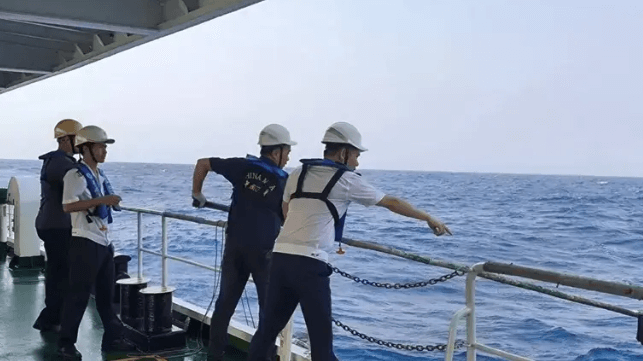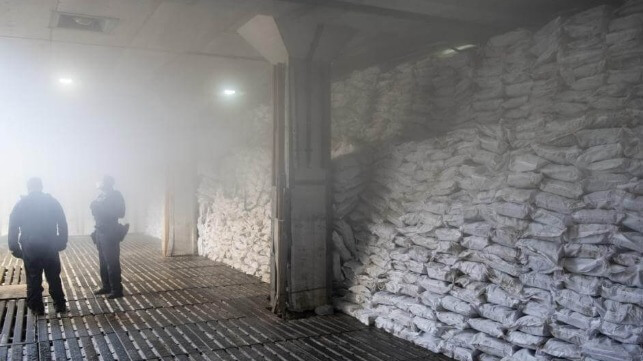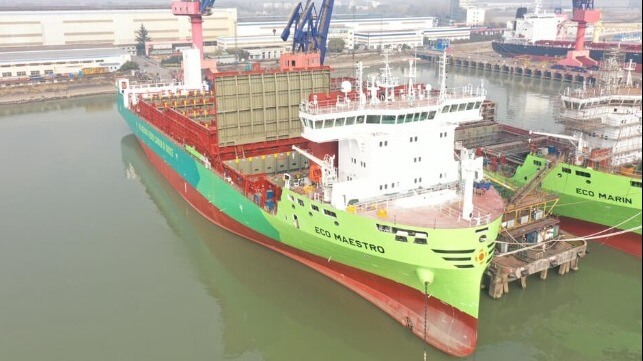With Monday's solar eclipse expected to draw tens of thousands to regions along the path of totality in Eastern Canada, major cellphone and internet providers say they're ready to handle a surge in wireless traffic in those areas.
Cities such as Niagara Falls, Ont., and Montreal have been bracing for an influx of tourists this weekend as people hope to catch a glimpse - through their special protective glasses - of the phenomenon Monday afternoon. The rare alignment of the sun, Earth and moon means other cities and towns in Ontario, Quebec and the Atlantic provinces could also see unusually high visitor levels.
“As with any large event that brings high levels of visitation into a concentrated area, it is possible that cell signal may be compromised,” the City of Niagara Falls said in a post on its website.
The city said it is expecting up to one million visitors over the coming days which would be “by far, the largest crowd we've ever experienced.” In the post, it warned local businesses that visitors may have urgent requests to use their landline phones if cell service becomes spotty.
But Canada's largest telecommunications carriers say they have been preparing for the eclipse and are confident their networks will hold up.
Rogers Communications Inc., BCE Inc. and Telus Corp. said they would deploy additional infrastructure to certain areas to prevent any potential disruptions. For Rogers and Bell, that includes using portable mobile towers, known as Cell on Wheels, or COWs, to increase capacity.
The companies also said their technical teams would pause routine maintenance work that could potentially reduce service levels.
“This is a once-in-a-lifetime moment for many Canadians and we are getting ready to handle the potential increase in wireless traffic in communities along the path of totality,” said Rogers spokesman Cam Gordon in a statement.
“We have also conducted network health checks, completed targeted upgrades and are optimizing sites to add more capacity.”
Bell spokeswoman Jacqueline Michelis said a dedicated team would monitor network performance throughout Monday.
“In preparation for the solar eclipse, our teams are putting measures in place to ensure the network continues to run optimally in regions where we anticipate large crowds to gather,” she said in a statement.
Enhancing network capacity by deploying portable cell sites is one of the most effective ways that telecom companies can prepare for increased demand, said Manav Gupta, chief technology officer and Canada technical sales team lead at IBM Canada.
He said Cell on Wheels “can quickly provide additional coverage and capacity where needed.”
“Providers will want to prepare for a network traffic surge resulting from people using telecommunications services more heavily during the event by, for example, streaming the eclipse, sharing content on social media or making calls,” said Gupta.
Unlike its two largest competitors, Telus doesn't need to deploy Cell on Wheels, said spokeswoman Jacinthe Beaulieu. She said Telus has made “massive investments in our network” in recent years that will allow it to offer increased capacity on Monday.
“Our infrastructure can support the increased number of visitors that is expected during the eclipse,” she said.
Beaulieu said Telus held internal preparedness calls and was in touch with public safety and government officials leading up to the eclipse. It has a “contingency and emergency response process” ready in case there are issues Monday.
Quebecor Inc. said in a statement that the “strength and robustness of our network should ensure continuity of wireless service” on eclipse day for all Videotron, Freedom Mobile and Fizz subscribers. But it added it would monitor the situation before and during the eclipse and “intervene quickly if necessary.”
“Please keep in mind that the eclipse itself has no effect on telecom networks, unlike a solar flare which can affect airwaves and electronic equipment,” the company said in an unattributed statement.
“It should also be noted that the total eclipse route will distribute potential viewing sites over a relatively large area, reducing the risk of network congestion. However, temporary slowdowns remain possible if larger-than-expected crowds materialize at certain locations.”
The Town of Niagara-on-the-Lake said those in the area should “consider developing a communication plan with family and friends ahead of time, and ensure your phone is fully charged for the day of the eclipse.”
“If you regularly use cash or want some on hand, consider visiting your local bank or ATM beforehand,” the town noted on its website. “Due to increased cellular traffic, some ATMs that operate on Wi-Fi may be unavailable.”
Although phone signals and internet connections are not directly affected by solar eclipses, which do not emit radiation or energies that disrupt electromagnetic waves, Gupta said they could cause “minor disruptions” to satellite communications. This could potentially affect signals related to GPS and, to a lesser extent, cellular networks due to atmospheric change.
“My advice would be, as with any noteworthy events, to proactively plan for the worst,” said Gupta.
“Gathering data, developing a strategy, and preparing for any potential issues is sound practice no matter what the challenge or issue may be.”
This report by The Canadian Press was first published April 5, 2024.
BNN Bloomberg is part of Bell Media, which is owned by BCE









